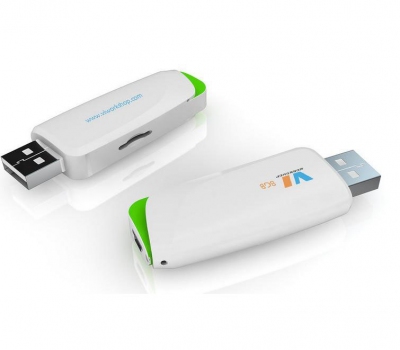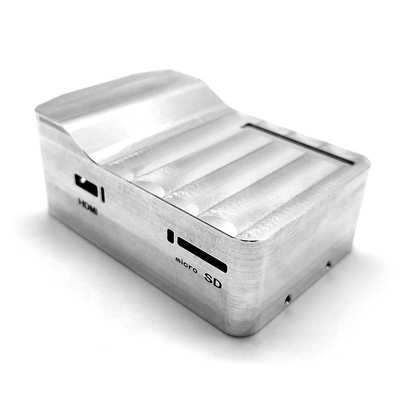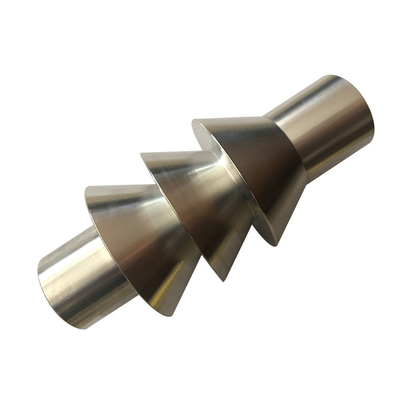Aluminum alloy products successfully applied to power grid construction
Recently, the "Environmentally Friendly Lightweight Line High-strength Carbon Nanotubes/Aluminum Alloys and Applications" project undertaken by Wuhan Nanrui Co., Ltd. (hereinafter referred to as "Wuhan Nanrui") undertaken by the State Grid Electric Power Research Institute won the technology of the State Grid Corporation of China. Progress second prize, the application of this new material product will help to improve the level of power grid technology and equipment.

In order to strengthen the foundation and leading role of new electric power materials in the construction of power grids, the State Grid Corporation of China officially named the "Carbon Nanotube Modified Aluminum Alloy and Applied Technology Research Team for Power Transmission and Transformation" in 2015. After continuous funding and technical research, the team relied on Wuhan NARI's resources and technical advantages to make breakthroughs in the research and development and production of nano-modified aluminum alloy materials and their products, formed a large-scale production capacity, and successfully realized nano-modified aluminum. The application of alloy products in the field of power grids has introduced nano-carbon alloy hardware products. The technology has been appraised by the Chinese Society of Electrical Engineering, and the overall project results have reached the international leading level.
The use of new materials, new processes and new technologies to explore ways of improving quality and efficiency and green development is the development direction of power grid construction. Wuhan Nanrui boldly introduced materials professionals, established Yangluo New Materials Industry Base, formed the dual platform advantages of Hubei Provincial Power New Materials Engineering Technology Center and State Grid Corporation Electrical New Materials Laboratory, and developed and innovative application of new materials for power storage.
In addition to copper, iron and aluminum are the two most used metals in the power grid. Compared with iron materials, aluminum materials have a lighter specific gravity, which is only one-third of that of steel materials; corrosion-resistant, a thin passivation film is formed on the surface to prevent further oxidation of the material; weak magnetic properties can reduce the internal material under alternating magnetic fields The energy loss caused by repeated changes of the magnetic chip.
Therefore, in some energy-saving or lightweight applications (such as power transmission lines), it has significant performance advantages. However, in the traditional alloying method to improve the strength of aluminum materials, the addition of a large number of alloying elements will cause the overall performance to decline, and the mechanical properties are universal It is relatively low and cannot meet high-strength applications (such as fittings). In order to develop high-performance aluminum alloys and promote its replacement of steel materials, the team decided to target carbon nanotube modified aluminum alloys.
Carbon nanotubes are a one-dimensional tubular material wound from graphite sheets with a diameter of only nanometers. The tiny "body" contains large energy. These "small things" are integrated into aluminum commonly used in power grids. Among alloy materials, like steel bars in concrete, the strength of aluminum alloy is significantly increased, which can play a major role in electric power and related fields. However, a major application drawback of nanomaterials is that they are prone to agglomeration. How to realize the dispersion and distribution of carbon nanotubes in the aluminum matrix is the key to the successful development of aluminum alloy materials. Traditionally, powder metallurgy technology is mainly used to solid-solid mix the nanophase and metal powder through mechanical ball milling, and then sinter to form. However, this method cannot achieve large sizes and the plasticity of the material is poor.
In order to solve this problem, the Wuhan Nanrui Science and Technology Research Team has gone through 4 years and hundreds of experiments. Through continuous optimization of the composition formula and adjustment of process parameters, the smelting preparation process of carbon nanotube modified aluminum alloy was proposed, and the carbon nanotube modified aluminum alloy was prepared. Technical problems such as the dispersion of nanotubes, the surface coating of carbon tubes, the infiltration of carbon tubes and aluminum liquid, and the suspension of carbon tubes in molten alloys have laid a solid foundation for the mass production of carbon nanotube modified aluminum alloys. It is reported that a few days ago, the carbon nanotube modified aluminum alloy has achieved a unit output of 30 tons.
Years of R&D investment finally bear fruit. Wuhan NARI took the lead in launching the first-generation product based on nano-modified aluminum alloy technology-nano-carbon alloy fittings, and passed the State Grid Corporation's new technology and new product achievement evaluation.
Energy-saving and environmental protection of power lines is a major measure for grid construction to respond to low-carbon economy and beautiful China. It not only covers the environmental protection design and long-term energy saving of operating lines, but also embodies the environmental protection manufacturing of power equipment and the level of new technology application.
“We have conducted energy consumption tests on nano-carbon alloy fittings in accordance with relevant standards. Taking the NW-07115 nano-carbon alloy bowl-head hanging plate as an example, the energy consumption is reduced by about 3 watts at an economic current of 240 amperes, which is equivalent to the line’s day and night lighting. The countless 3 watt light bulbs that were used were extinguished.” The project leader said vividly when introducing the energy-saving advantages of nano-carbon alloy fittings.
According to the test results, when the nano-carbon alloy bowl head hanging plate is used in conjunction with the tension clamp, the energy consumption of this unit is reduced by 22%-24% compared with the cast iron fittings. According to statistics on the bidding data of cast iron fittings for distribution network over the years (only including agreement inventory), the annual demand for distribution network fittings exceeds 400 million yuan. If energy-saving nano-carbon alloy fittings are used instead, the economic current density is 185 amperes per year. Save more than 160,000 megawatt-hours of electricity.
In addition, environmental protection, light weight, and beautiful appearance are also the application advantages of this series of fittings. With the strengthening of the national environmental protection policy, the access conditions of the foundry industry continue to improve, and the original small, low-capacity iron foundry has been forced to shut down, resulting in an increase in the price of cast iron raw materials. At the same time, the hot-dip galvanizing process has huge environmental pollution, and the simple galvanizing process workshop and the wanton discharge of sewage have caused great harm to the operators and the natural environment. In contrast, nano-carbon alloy fittings do not need to be hot-dip galvanized, which avoids environmental pollution and fulfills the corporate mission of the State Grid Corporation of "Building a Green Power Grid and Dedicating Clean Energy" with practical effects. And the weight of its body is only 30%-50% of the cast iron fittings of the same specification, and the standard breaking load is increased by more than 30%, which can provide more stable and long-term safety guarantee for line operation.
Not only that, the lightweight and high-strength nano-modified aluminum alloy materials can be used in various situations, such as aluminum alloy transformers, aluminum alloy lightning arresters, lightweight aluminum alloy bodies, etc., and they also have great applications in new energy vehicles and other fields. space. At present, aluminum alloy lightning arresters based on carbon nanotube modified aluminum alloy technology have been put into production in Xiangyang Insulator Factory, with an annual output of more than 20,000 sets.
In the future, Wuhan Nanrui will always adhere to the development concept of creating "new materials" to be competitive, in-depth development and production of new material products, and cultivating the diversified application market of carbon nanotube modified aluminum alloy materials to build a green for the country , Environmental protection, energy saving, and efficient clean energy grid to make its due contribution.
Link to this article: Aluminum alloy products successfully applied to power grid construction
Reprint Statement: If there are no special instructions, all articles on this site are original. Please indicate the source for reprinting:https://www.cncmachiningptj.com
 PTJ® provides a full range of Custom manufacturer of precision fabricated parts made from aluminum parts, brass parts, bronze, copper parts, high yield alloy, low carbon steel investment casting, high carbon steel and stainless steel alloy. Capable of handling parts up to +/-0.0002 in. tolerance. Processes include cnc turning, cnc milling, laser cutting,.ISO 9001:2015 &AS-9100 certified.
PTJ® provides a full range of Custom manufacturer of precision fabricated parts made from aluminum parts, brass parts, bronze, copper parts, high yield alloy, low carbon steel investment casting, high carbon steel and stainless steel alloy. Capable of handling parts up to +/-0.0002 in. tolerance. Processes include cnc turning, cnc milling, laser cutting,.ISO 9001:2015 &AS-9100 certified.
Tell us a little about your project’s budget and expected delivery time. We will strategize with you to provide the most cost-effective services to help you reach your target,You are welcome to contact us directly ( [email protected] ) .

- 5 Axis Machining
- Cnc Milling
- Cnc Turning
- Machining Industries
- Machining Process
- Surface Treatment
- Metal Machining
- Plastic Machining
- Powder Metallurgy Mold
- Die Casting
- Parts Gallery
- Auto Metal Parts
- Machinery Parts
- LED Heatsink
- Building Parts
- Mobile Parts
- Medical Parts
- Electronic Parts
- Tailored Machining
- Bicycle Parts
- Aluminum Machining
- Titanium Machining
- Stainless Steel Machining
- Copper Machining
- Brass Machining
- Super Alloy Machining
- Peek Machining
- UHMW Machining
- Unilate Machining
- PA6 Machining
- PPS Machining
- Teflon Machining
- Inconel Machining
- Tool Steel Machining
- More Material





